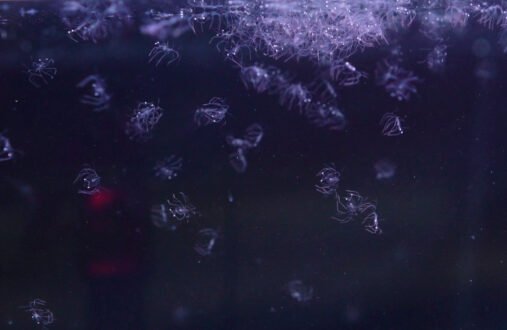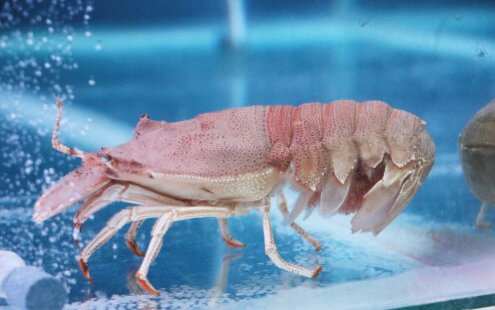Breeding and producing domesticated spiny lobsters have been actively pursued for decades, but they grow slowly, and their larval development is complicated, making the pursuit technically challenging. But slipper lobsters (Thenus orientalis) seem to be easier to raise.
While spiny lobsters take their time with larval development, taking up to 300 days, the slipper lobster larvae are reared within 30 days. Likewise, the spiny lobster goes through up to 11 larval development stages, while the slipper lobster only has four.
Seeing the tremendous potential in slipper lobster production, researchers at the Southeast Asian Fisheries Development Center Aquaculture Department (SEAFDEC/AQD) embarked on the task of developing hatchery techniques for slipper lobster in the Philippines. According to Shelah Mae Ursua, the project leader at SEAFDEC/AQD, they chose slipper lobster not just because of its shorter larval stages but also for its hardier larvae.
The team was able to spawn and hatch slipper lobster eggs and they are now completing the life cycle in captivity, said Leobert de la Peña, research division head at SEAFDEC/AQD. The team is currently studying the best way to grow the phyllosoma larvae, maintaining the water quality and feeding them the proper food before they are grown in nurseries and grow-out cages.
“The larval rearing stage is the most challenging phase of its life cycle development. Upon successfully rearing the phyllosoma larvae, the hatchery-produced seeds will be used for the experimental run in the grow-out culture of the slipper lobsters,” de la Peña added.
“Although lobster aquaculture production, which depends on natural seedlings, is unstable, it is a significant livelihood source for some coastal communities in Indonesia and Vietnam,” said SEAFDEC/AQD Chief, Dan Baliao. “If we succeed in mass production of the seedlings, we can sustainably supply those many times over, and it will contribute greatly to the stable production of the lobster.”
The project is funded by the Government of Japan Trust Fund (GOJ-TF) and is programmed to continue until 2024.

Mass of phyllosoma larvae floating. Credits: SEAFDEC/AQD.













